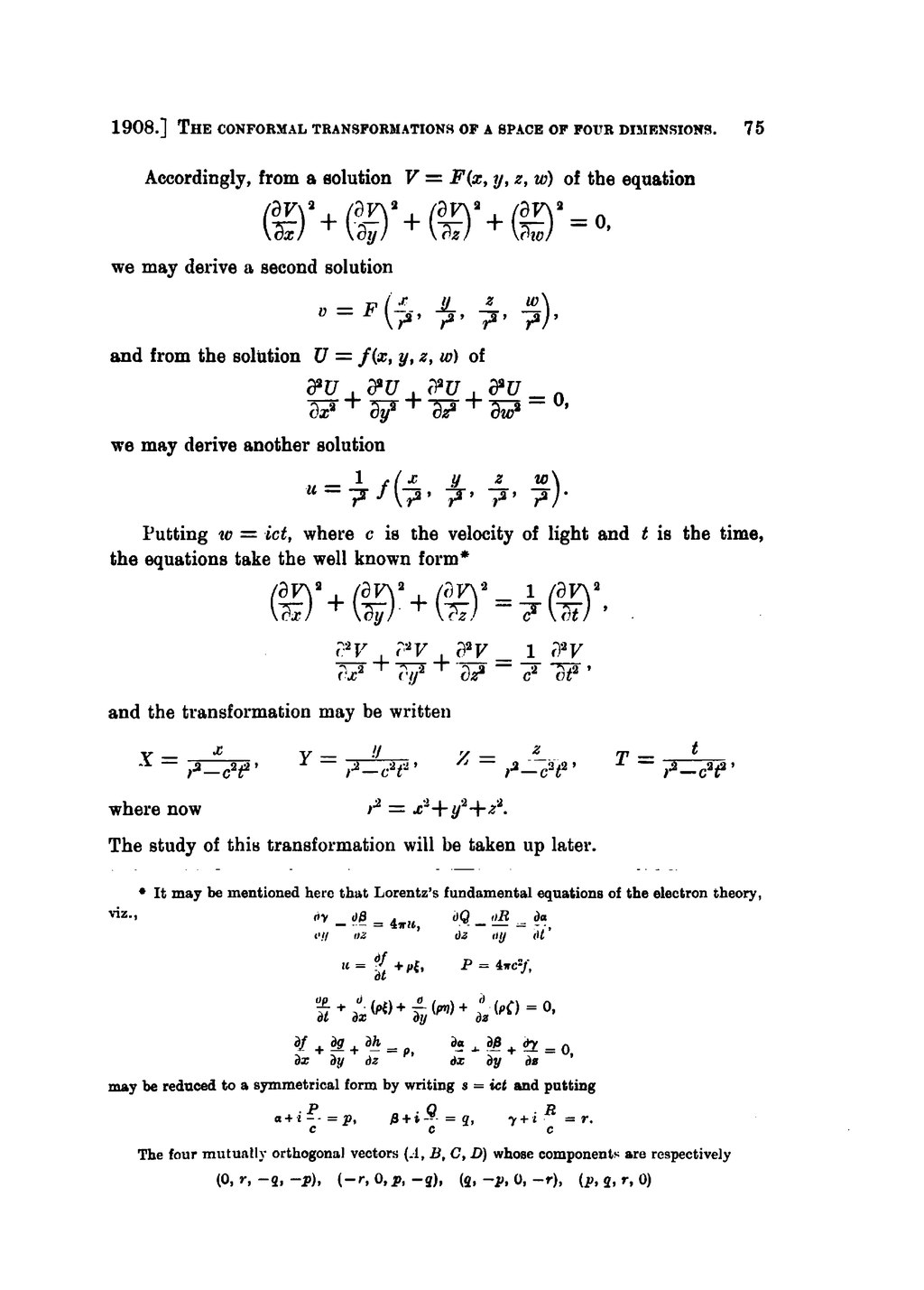It may be mentioned here that Lorentz's fundamental equations of the electron theory, viz.,




|
|
may be reduced to a symmetrical form by writing s = ict and putting

|
|
The four mutually orthogonal vectors (A, B, C, D) whose components are respectively
(0, r, -q, -p), (-r, 0, p, -q), (q, -p, 0, -r), (p, q, r, 0)
satisfy the equations

|
|
where
 if
if 
Again, if we put

|
|
and introduce four new vectors  whose components are respectively
whose components are respectively
(S, -Z, Y, -X) (Z, S, -X, -Y) (-Y, X, S, -Z) (X, Y, Z, S),
we find

|
|
where

|
|
Finally, if X, Y, Z, S can be derived from a potential function n so that

|
|
we can form four mutually orthogonal vectors θ, Φ, ψ, χ whose components are respectively
(n, r, -q, -p). (-r, n, p, -q), (q, -p, n, -r), (p, q, r, n),
and the equations then take the simple form

|
|






















